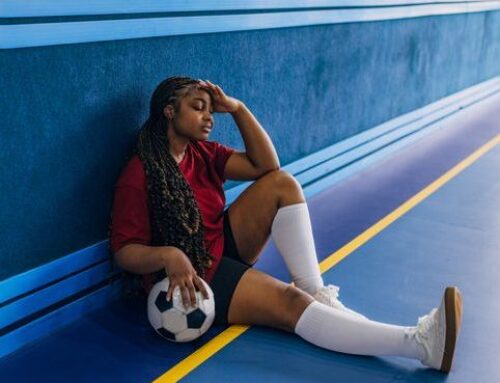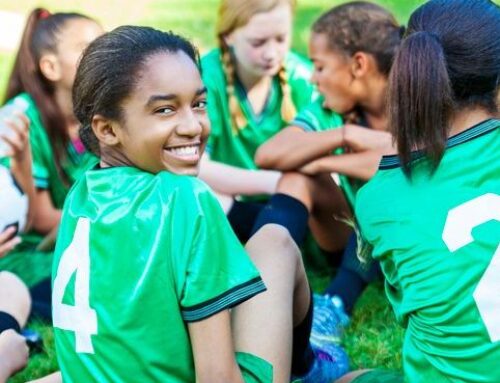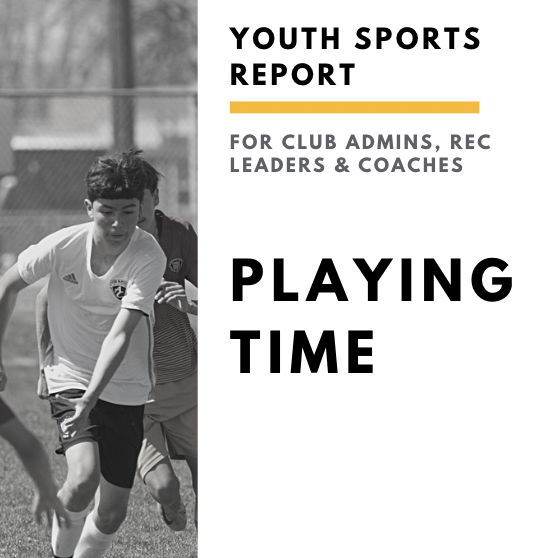Get our exclusive report. Download the iSport360 Club Switching Report Here – For Club Admins, Rec Leaders and Coaches.
Setting Goals Can Help Young Athletes Stay on Track for Getting Back to Sports
Now that sports practices (socially distanced with limited kids and contact) are picking up, athletes are discovering that “rest” really means “active rest” and not “passive rest”, like sitting on the couch playing video games. We have begun to see an increase in overuse injuries from de-conditioning and lack of preparation. One solution is athlete goal setting.
This recent Instagram post caught my eye:
“Only sharing this as a word of warning for kids (and coaches) ramping up with sports again. Don’t overdo it!! Chase threw 70 pitches in his first game back after not having thrown since the fall. Now he’s sidelined for at least two weeks. Don’t think he’s torn anything (although he thinks he did), but we probably could have avoided this.”
The mother who posted this is not alone.
This mom has nothing but my sympathy. The list of what parents “should” have been doing for the past four months has been overwhelming, and I promise you, I am not here to add to it.
Parents are being forced to multitask at home. They are working while entertaining and maintaining the physical and emotional well-being of their children, not to mention shouldering the responsibility for academic oversight.
And now, when kids typically would be attending supervised sports camps, families are trying to recreate these in their backyards with the parents home, but not always in attendance watching them. Kids spending hours at home are limited in the activities they can do. As a result, some are simply doing the same thing over and over again. This can introduce issues of overtraining.
- As a pediatric orthopedic surgeon, I’ve seen an increase in throwing injuries such as Little League elbow and shoulder in kids who have been spending hours a day “playing catch in the yard” without proper stretching and strengthening.
- Add to this the fact that a young player’s poor technique is going uncorrected without an attentive and qualified coach monitoring the activity.
- And then there’s the lack of available safety equipment or, when available, its proper use.
And then there are youngsters who essentially stopped participating in any sports activity when they went into quarantine. They have been engaging in little to no physical activity, maybe spending their days sitting around and playing video games. In addition to having lost fitness levels they attained when playing on a team, they have lost ground in terms of their readiness to return to activity. When they return to play, they are in danger of injuries from their lack of conditioning.
So, what’s the best way for parents to help their kids stay on course to be prepared when they go back to their sport?
The parent-child dynamic can be challenging if attempting to transition to a coach-athlete relationship. I encourage parents to remain parents: advocate for safety and fun, instead of actively trying to “coach” their child. If a parent is attempting to utilize both hats, I recommend turning to resources from national programs like American Youth Soccer Organization or Little league baseball.
Encourage your child to be goal-oriented. Together, along with their coach, set some goals for their fitness routines.
Dr. Megan Babkes, Professor of Sport and Exercise Science at University of Northern Colorado offers helpful guidelines for setting appropriate goals.
She recommends establishing a four-pronged approach to athlete goal setting:
- Long-term or dream goals
- Intermediate goals
- Short-term goals
- Immediate or “process” goals. Process Goals helps athletes stay grounded in the moment, which is crucial to building confidence.
Dr. Babkes also recommends athletes take a multidisciplinary approach to improving. She suggests setting many different goals beyond just improving performance or scoring goals. Athletes can set practice goals, mental game goals, fitness and conditioning goals, as well as nutrition goals.
A word of warning. If your child tends toward perfectionism they might see athlete goal setting as a task to master and this could cause burn out. Instead, athletes need to see goals as general guidelines that can be continually evaluated and adapted.
To help you, here is a goal-setting worksheet Dr. Babkes developed.
Keep these few things in mind when have your athlete goal setting session.
Here are a few other tips to help your athlete goal setting and to help them stay on track for participating in competitive sports when they begin again:
- Create diversity in activities. Time limits on each activity is important in keeping children safely active.
- Parents know their kids. Take pain seriously. If your child complains about an ache or pain, make a change in activity.
- Remember “rest days” are still important, even when at home.
- Kids shouldn’t be throwing baseballs everyday in the backyard. They should still abide by pitch counts and recommendations even though it’s “at home”.
The more difficult psychological impacts on kids are depression and a sense of isolation and despair. Kids need their friends and being away from them is especially difficult. I would encourage socially responsible get-togethers with friends as the best way to prevent “social isolation burnout”.
Looking for hard and fast advice is difficult. Uncertainty is one of the few things we can guarantee with this pandemic. There is uncertainty about what’s coming next, and even when “next” will happen. There is a lack of certainty around when school sports will begin again, around when local leagues will get back to playing. But keep in mind that we are all in this together. Coaches, doctors, trainers and educators are all doing their best to keep young athletes healthy and whole. And we know that is true of parents, too.
So, take a deep breath, and continue to show your children the love that motivates you to do what’s right for them.
August 16, 2020 By Dr. Jennifer Beck
For more on iSport360 and how we can help empower your athlete, click here.
Learn more or request a demo of our youth sports software that is helping teams improve communication, organization and player development.
January 2, 2021





